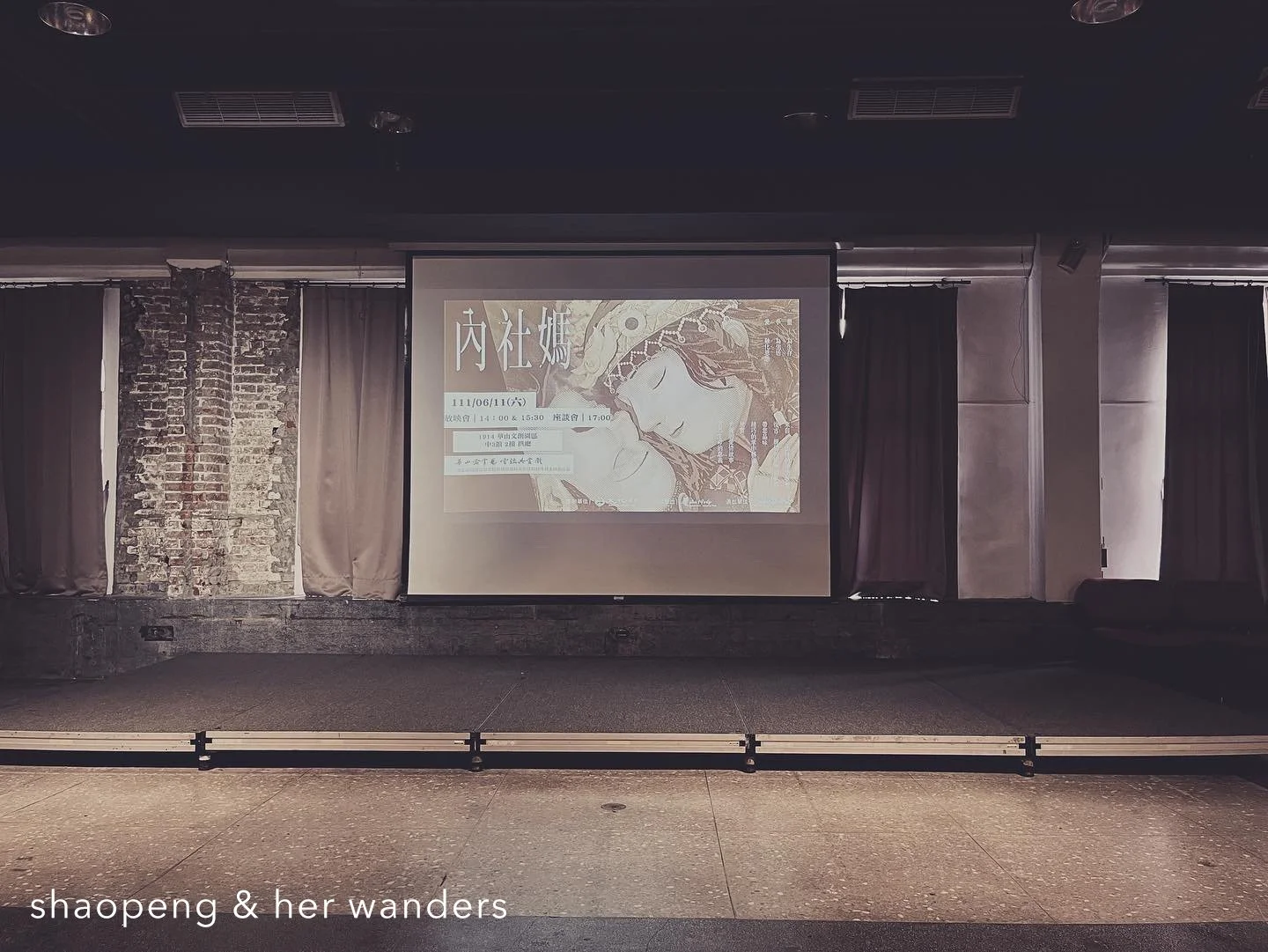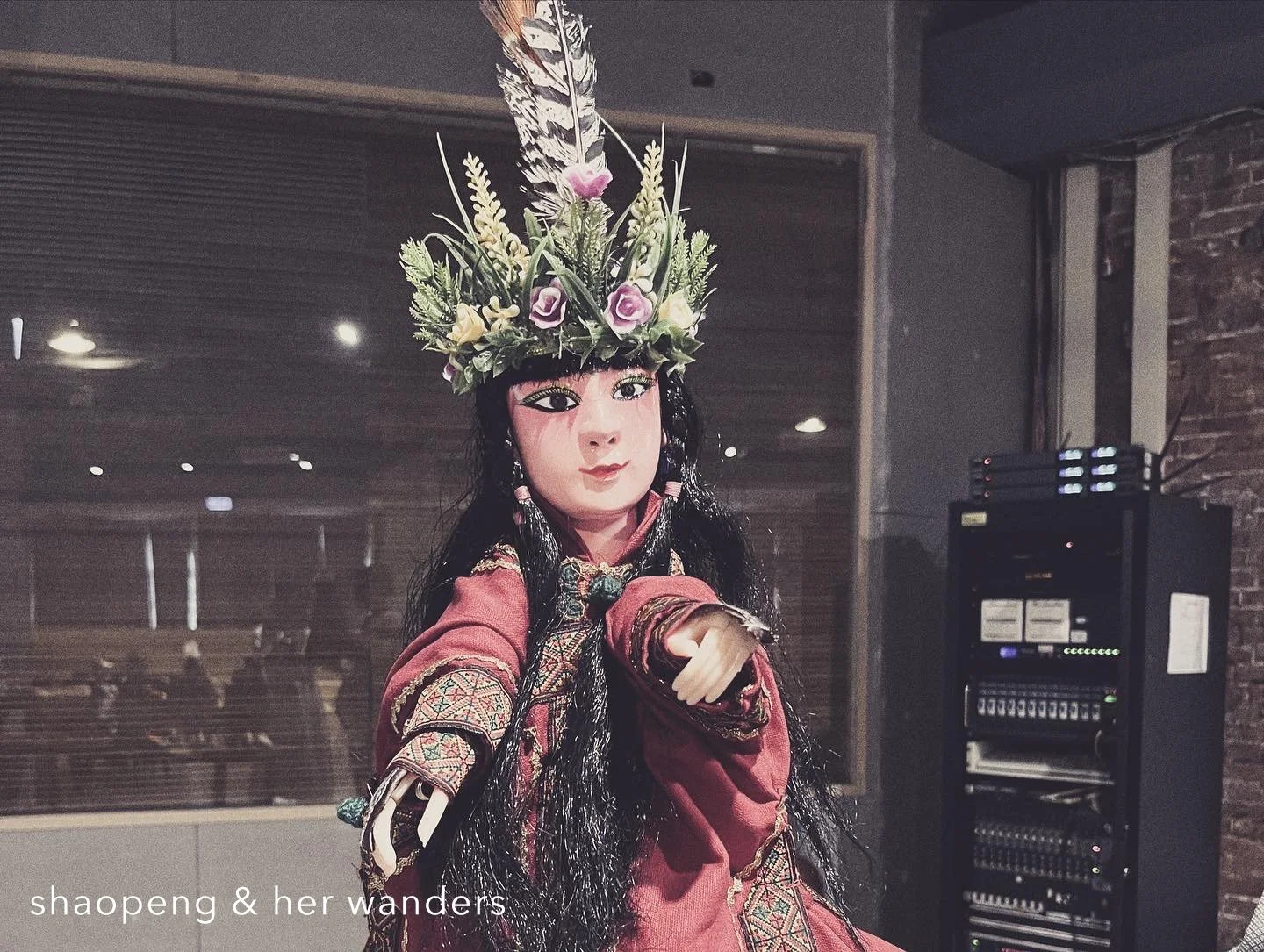Nei She Ma : A Hand-Puppet Play that Recounts the Forgotten Stories of Taiwan
TAIPEI, Taiwan— Two weeks ago, the screening of a puppet play Nei She Ma (內社媽) premiered at the Umay Theatre located in Huashan 1914 Creative Park. This special screening made up for the live performance that was supposed to take place but unfortunately got cancelled due to COVID-19.
Screening of Nei She Ma at Umay Theatre in Taipei City
What is Nei She Ma all about?
Produced by the Ming Hsing Ke Glove Puppet Theatre (明興閣掌中劇團), Nei She Ma is unique in every aspect.
For those who are not familiar with the traditions of hand puppetry (also known as glove puppetry or budaixi), it’s often performed at local temples as part of the religious rituals. In terms of of the content, it’s usually based on stories adopted from Chinese literature and mythology. However, same stories could be recounted differently depending on the ‘style’ that the puppeteer has inherited from his master or, in some cases, developed on his own.
What makes Nei She Ma so special is that is that a rare subject was chosen for this puppet play: a story in which an indigenous tribe plays a central role. Based on a real story titled “Jia Zuo Ya Zhi” (佳佐压誌), Nei She Ma recounts the romantic encounter of a Taiwanese man and an indigenous woman in 18th-century Pingtung at the southern tip of Taiwan.
The male lead, Chan Shu Chi, was a Han Taiwanese whose ancestors arrived from southern China in the 12th century. Chan was a well-respected man in the region, as he often act as a mediator who resolved conflicts between the Hakka, the Hoklo, and the Indigenous tribes. In his time, Taiwan was still developing, and it was not uncommon that local inhabitants would get into dispute for matters such as gaining access to water resources.
The main puppets that performed in Nei She Ma
As a business man who travels from place to place, Chan also established a good relationship with the mountain-dwelling indigenous tribe called ‘Nei She’. In the puppet play, we see that Chan, notable for his bamboo hat and the buffalo wagon he brings, pays his tribute to the tribe on a special occasion: the wedding ceremony of the chieftain’s son.
In the tribe, Chan meets the chieftain’s beautiful daughter, the ‘Young Princess’. Chan immediately falls in love with her, not knowing that she has fallen for him too.
At that time, interracial marriage for indigenous tribes, particularly when the chieftain’s family is involved, was unthinkable. Yet, fate has brought Chan and the Young Princess together following a series of events, which eventually led to the marriage of the century despite their cultural difference.
Back in the 18th century, the Young Princess in the play was often referred to as the “Nei She Ma” (meaning Mother of Nei She), hence the title of this puppet play. Nei She Ma is said to be fluent in the Hokkien dialect.
Similar to her highly-regarded husband, Nei She Ma often stood up for her fellow Taiwanese community against the tribe on several occasions. Most famously, she stopped them from becoming the target of the tribe’s head-hunting traditions, leading to a peaceful resolution between local inhabitants and the mountain-dwelling tribe.
What this writer finds intriguing and unexpected about this play is that the troupe has invited Dremedreman Azangiljan — the now-chieftess of the Tjuwaqau tribe — to be the voice-over for the Young Princess. Tjuwaqau tribe is located in Lay Yi Township in Pingtung, in the same region where Nei She tribe was found. Clearly, Azangiljan’s presence makes this play even more authentic than anyone could have hoped for.
Puppet for the Princess in Nei She Ma
Afterthought
Though the experience of watching a film screening can be different from that of a live performance, I have to say that the way the puppets are staged is quite impressive. Contrary to a traditional puppet stage, Ming Hsing Ke Glove Puppet Theatre has adopted a rather wide stage for this performance, resulting in a beautifully-choreographed scenography similar to what we would see in a film. To the writer’s knowledge, no other puppet troupe in Taiwan has made similar attempts.
After the screening, this writer had the opportunity to chat with the play’s Director and Lead Puppeteer, Su Jun-Rong, who is also in charge of the Ming Hsing Ke Glove Puppet Theatre. According to Su, the adoption of an indigenous story from Pingtung (where the troupe is based) was intended to shed light on a local story that remains largely unknown.
Su also shared about what it was like when the troupe put on the live performance in southern Taiwan: in the scene where puppets of tribesmen gather to dance and celebrate the marriage of the chieftain’s son, there were in fact real tribesmen dancing simultaneously in front of the stage. How cool is that?
I can’t emphasise more how much I was inspired by Su’s passion for his craft, one that struggles to appeal to the next generation of audiences. After a nice chat with Su, I reassured him that — if they ever plan for a live performance in Taipei — I would reserve my place without a moment of hesitation.
Ming Hsing Ke Glove Puppet Theatre
Located in Pingtung, the southern tip of Taiwan, the Ming Hsing Ke Glove Puppet Theatre was founded in 1957 by Su Ming-shun. In 1989, Su Jun-Rong took over his father’s role and became the director of the troupe.



